John and Mary Kormendy: Birding in SE China July 6 - 12, 2019
These are the pictures from a trip to China in July 2019, where John first lectured at a Shanghai Summer School and then took part in IAU Syposium 353, Galactic Dynamics in the Era of Large Surveys. After the symposium, we spent parts of 2 days north of Shanghai in the prime migration staging beach for Spoon-billed sandpiper and then spent the rest of the week south of Shanghai in the mountains opposite the strait that separates Taiwan from mainland China. The tour was privately guided by the world expert in Spoon-billed sandpiper in China, Mr. Zhang Lin (email: zhanglinastro@163.com ).
This tour was short, constrained by work. The season was not optimal, both because mid-July is post-breeding for most birds and because it is the rainy season. Several birding days were badly clobbered by torrential rain. We got only 19 life birds each. But we got 4 of our 5 most wanted species, missing out on Blue-crowned laughingthrush in part because locals prevent access to the river island where they breed. (The ostensible reason is that insensitive bird photographers have indulged in some truly outrageous behavior, such as pulling branches with nests downward for better pictures. So birders should be warned: now the locals let nobody onto the island, not even birders that bring no camera. In breeding season, it should be possible to see the birds from the mainland. During our post-breeding trip, the birds were dispersed and we didn't see them.)
This tour was not well suited for bird photography, so only 22 species are illustrated here. They include 13 of our 19 new birds; 10 pictures actually show our life bird. We were spectacularly lucky with Cabot's tragopan and happily lucky with several other species. But the birding was slow, and photography was correspondingly difficult. In this travelog, even bad pictures are included, because this is our "digital memory" of the species and scenery that we saw.
This web site is finished - no further pictures will be added. The pictures are copyrighted and should not be used without permission.
Trip Bird
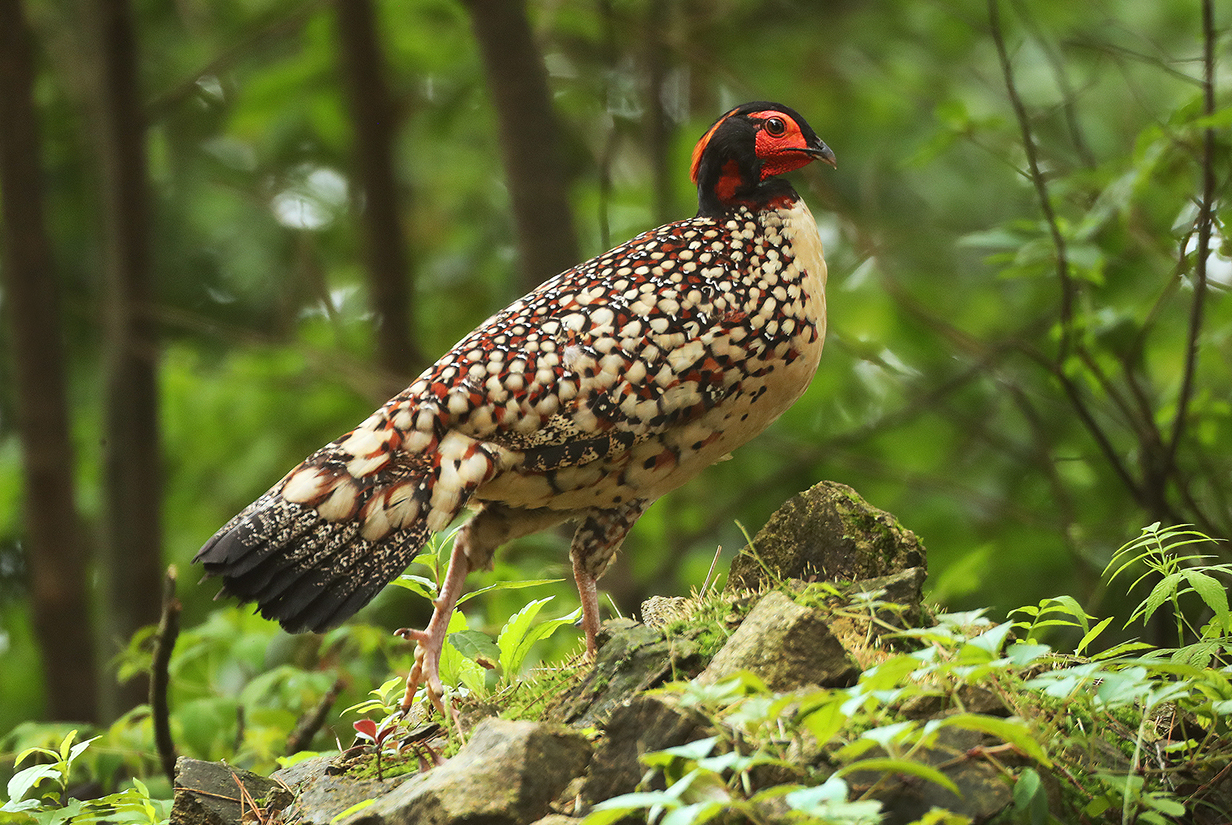
Cabot's tragopan (male) was our most important target bird, and we were luck enough to get spectacular views of 2 males.
World Heritage Site for shorebirds at Tiaozini Seawall (Near Jiang Gang ~ 3-4 hours north of Shanghai)
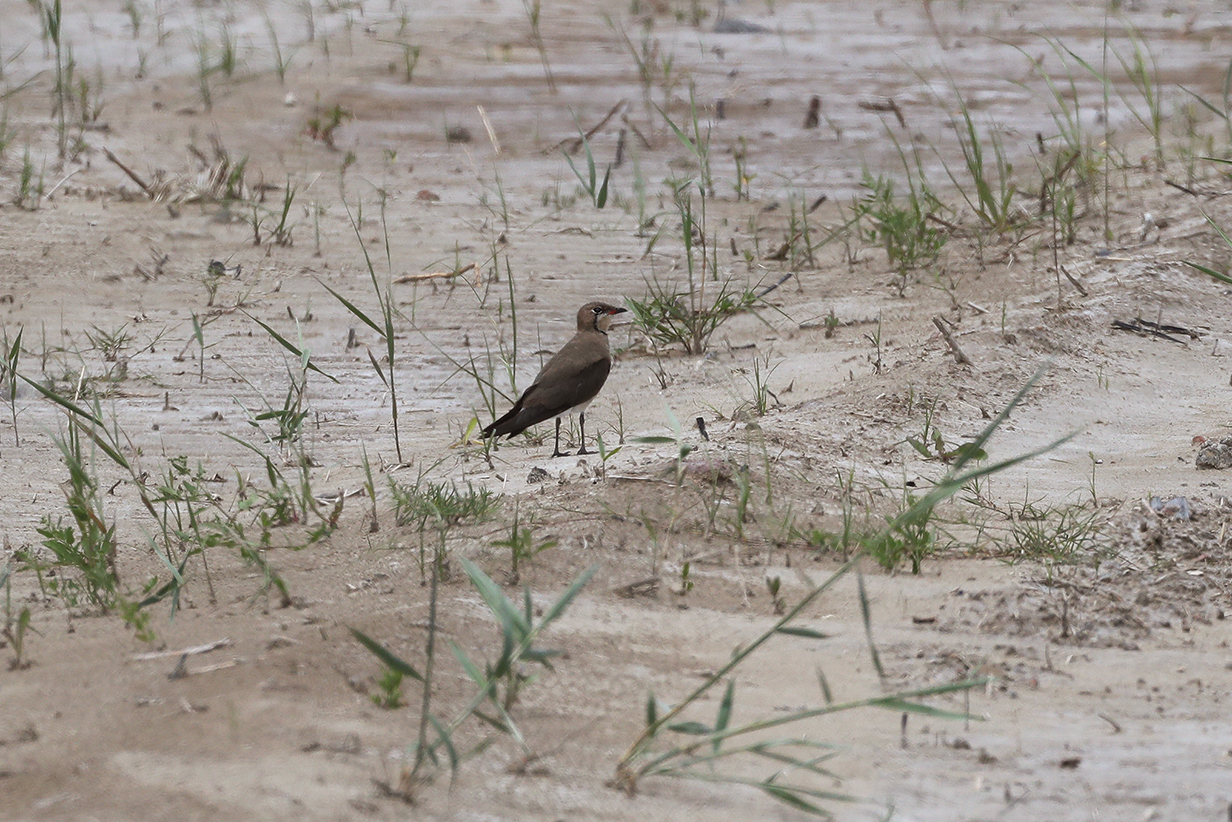
Oriental pratincole (This is our life bird. Note that the tail is very short compared to the folded wings.)
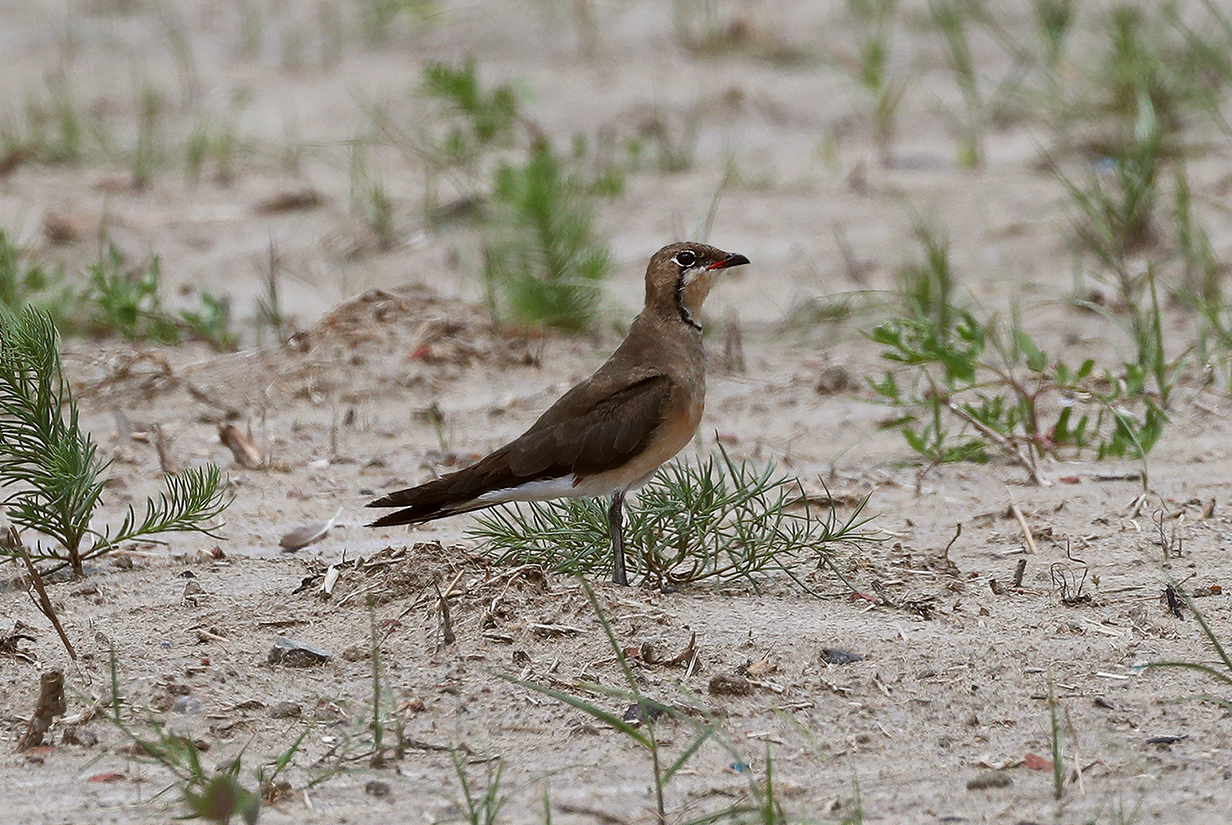

Oriental pratincole (Two more pictures of our life bird. We saw a flock of several hundred of these birds - unprecedented, according to our guide.)
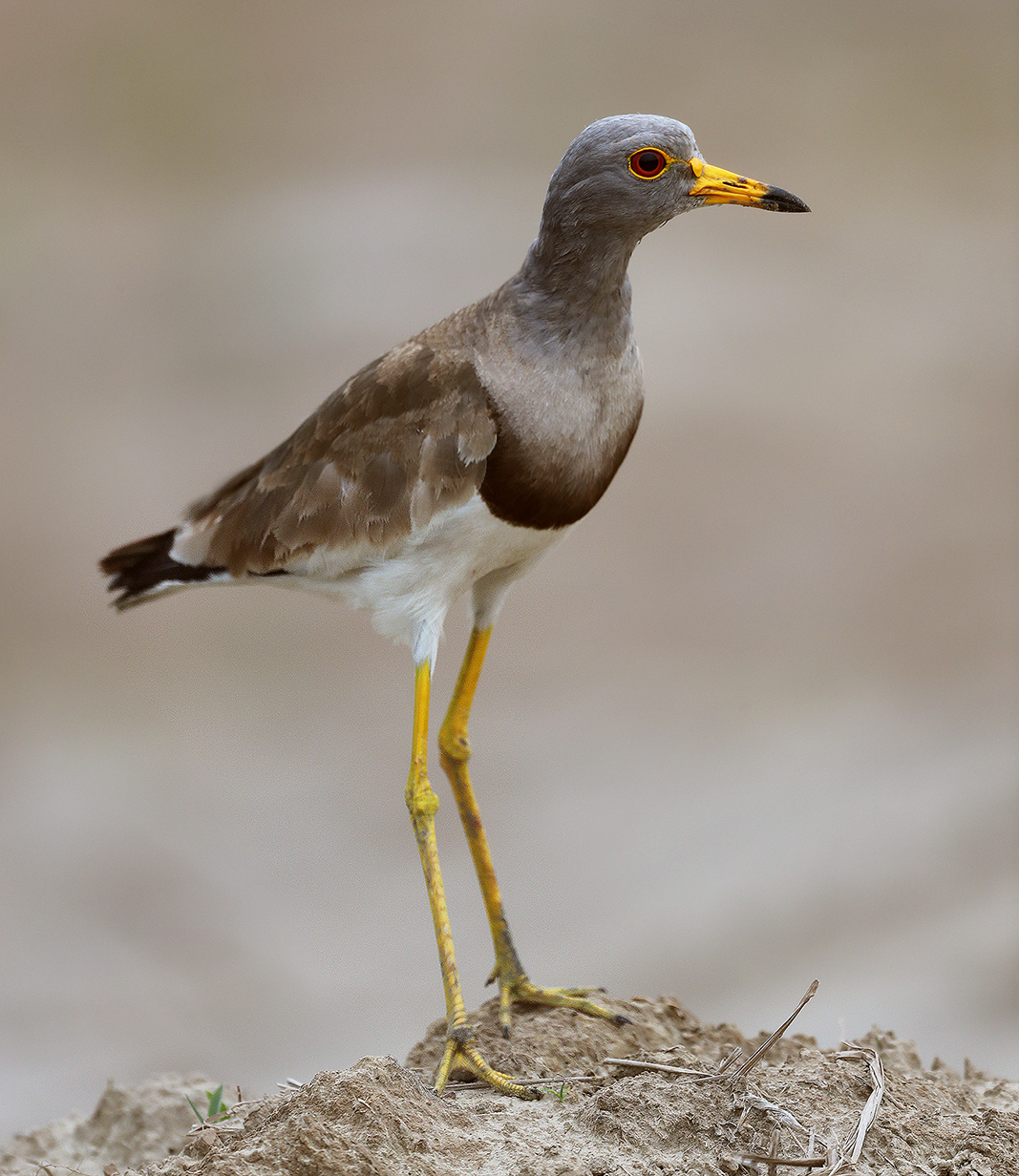
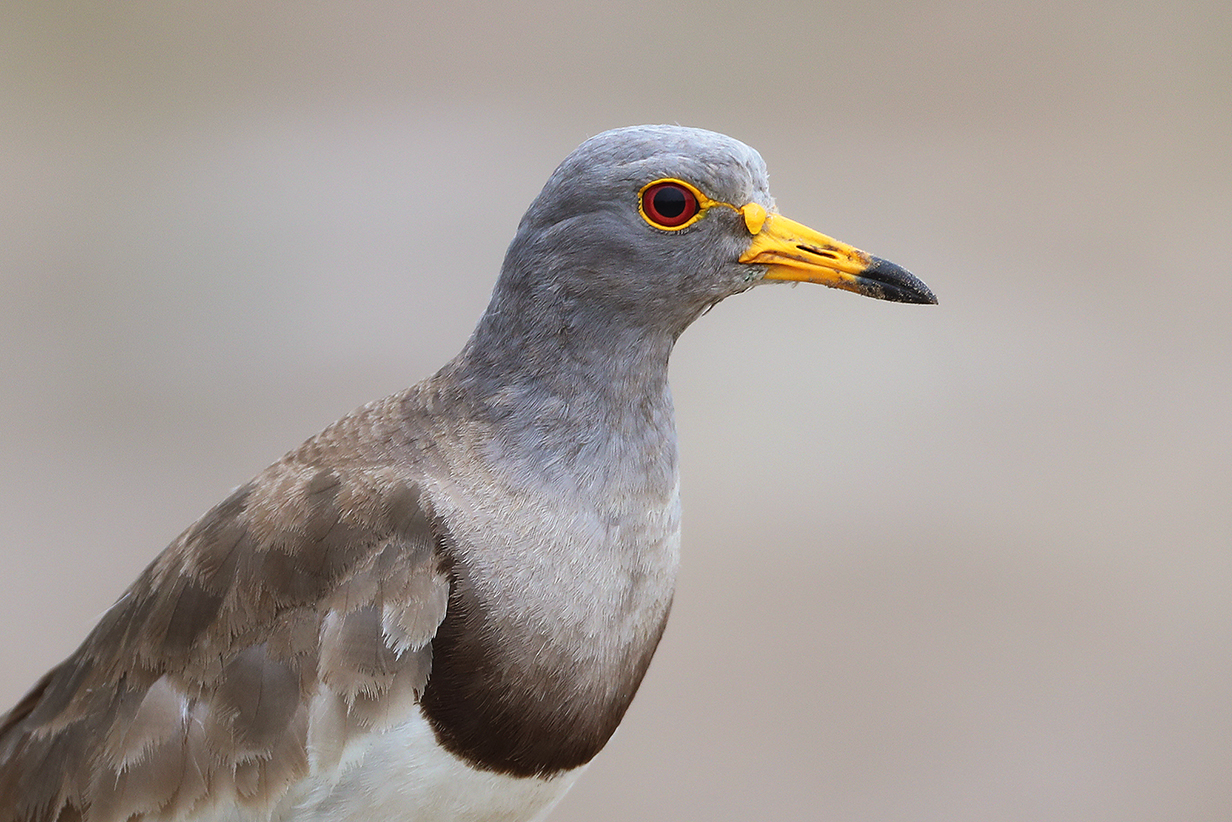
Gray-headed lapwing
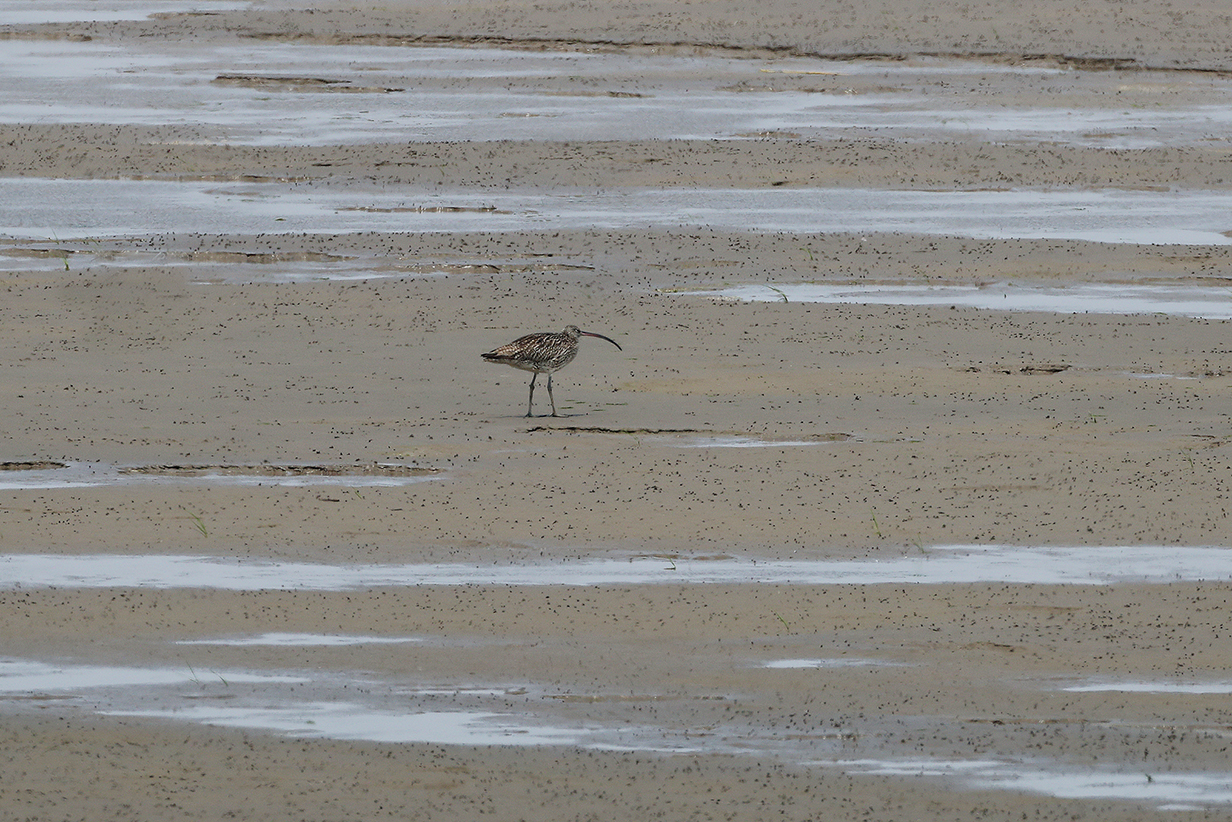
Far-eastern curlew (This area had just been proclaimed a World Heritage Site because of the importance of the extensive mud flats for migrating shorebirds, especially Spoon-billed sandpiper. It's not an easy - or, indeed, a secure - accomplishment: shoreland is being developed for aquaculture, farming, and living space at an astonishing rate throughout China.)
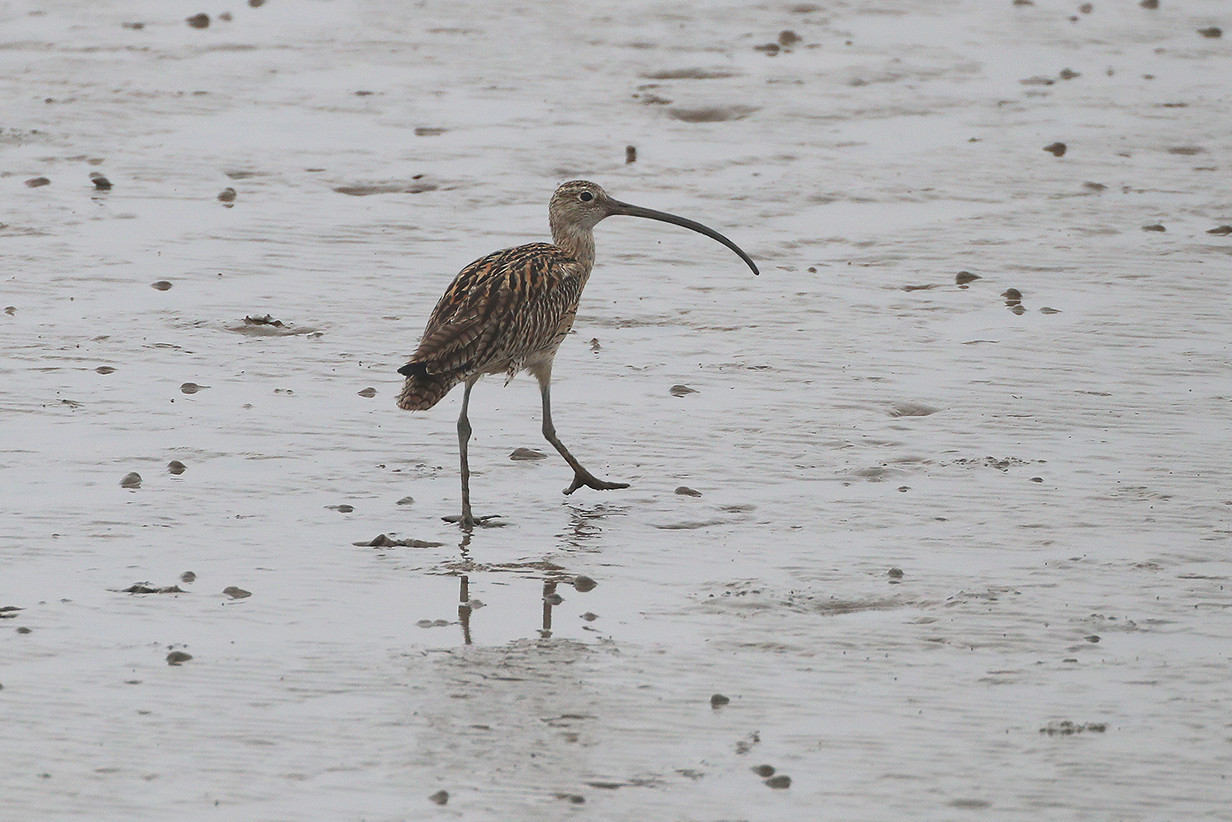
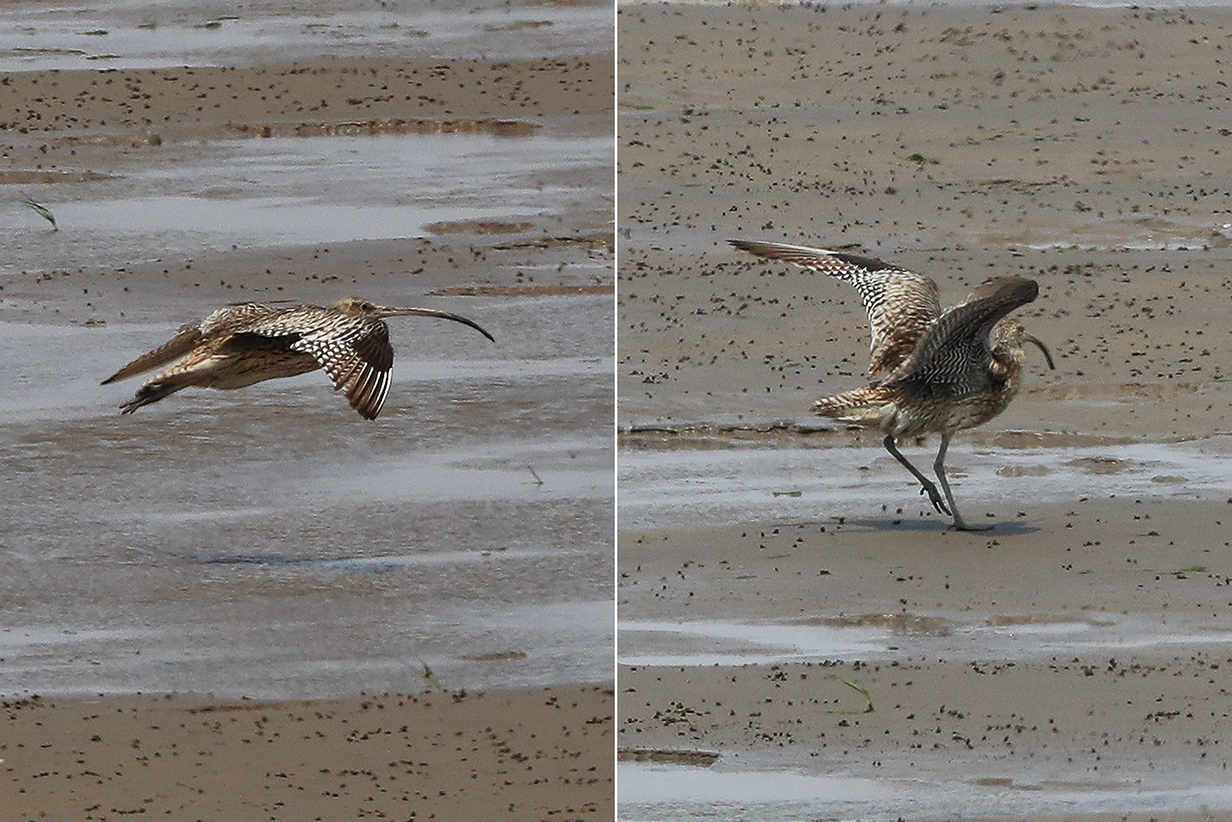
Far-eastern curlew

Oriental stork (This is one bird in a group of our life birds, very far away even for an 1130 mm telephoto. I have increased the contrast, color saturation and vibrance shamelessly to show that the legs and the skin around the eye are dark red. The bill is black. These are defining characteristics.)
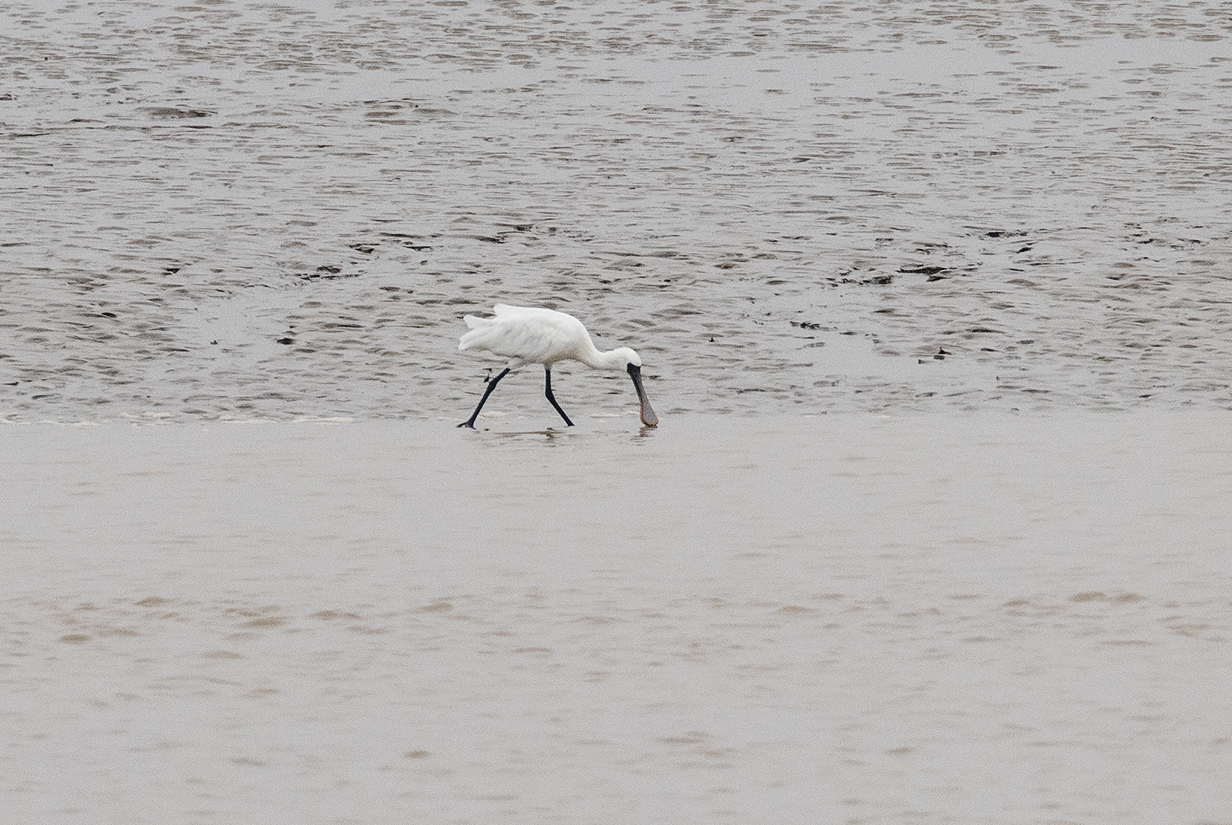
Black-faced spoonbill (One of a flock of our life birds - far out on the tidal flats)


Spoon-billed sandpiper (This was our other main target bird of the trip. We saw about 5 different birds, which is -- remarkably enough -- roughly 1 % of the world population. At the time of our trip, most adults were in the far north of Asia, on their breeding grounds. A few first-year birds stay on the tidal flats several hours north of Shanghai instead of migrating all the way up north. These are the birds that we saw.)


Asian dowitcher
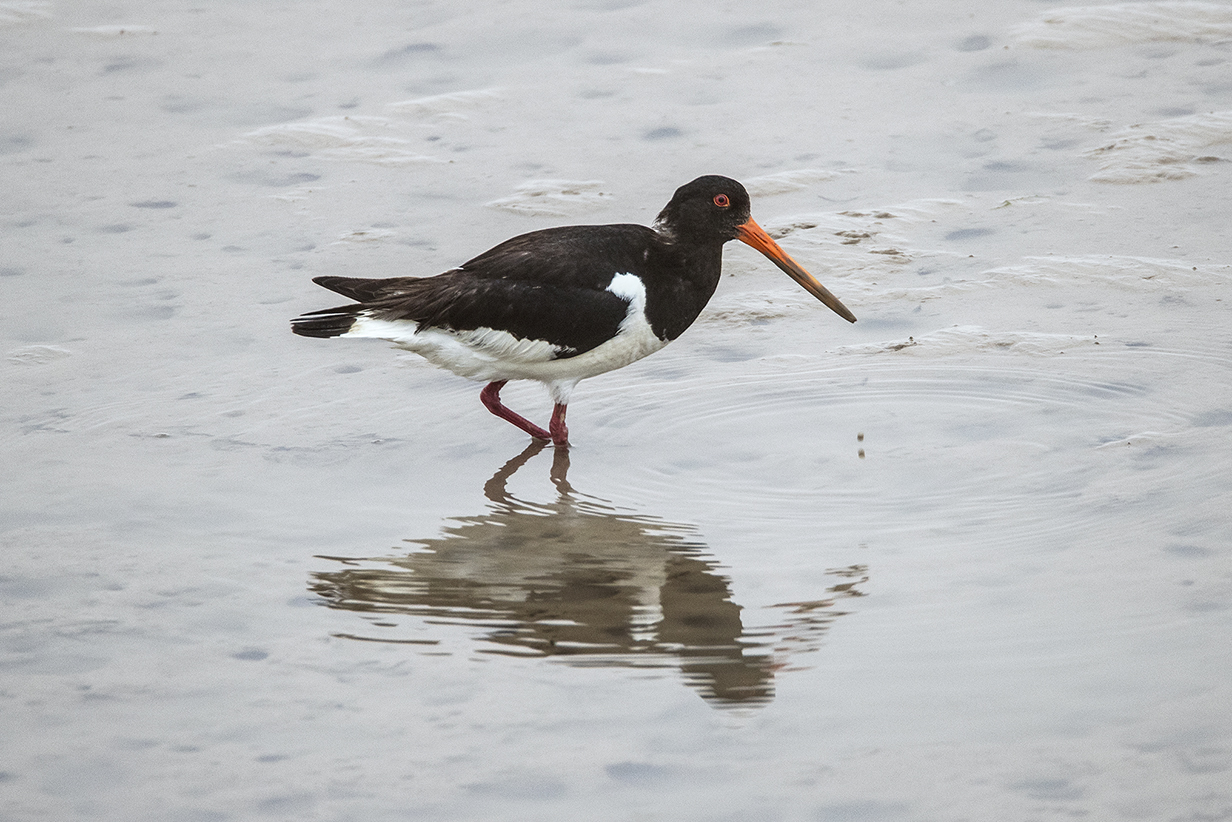
Eurasian oystercatcher
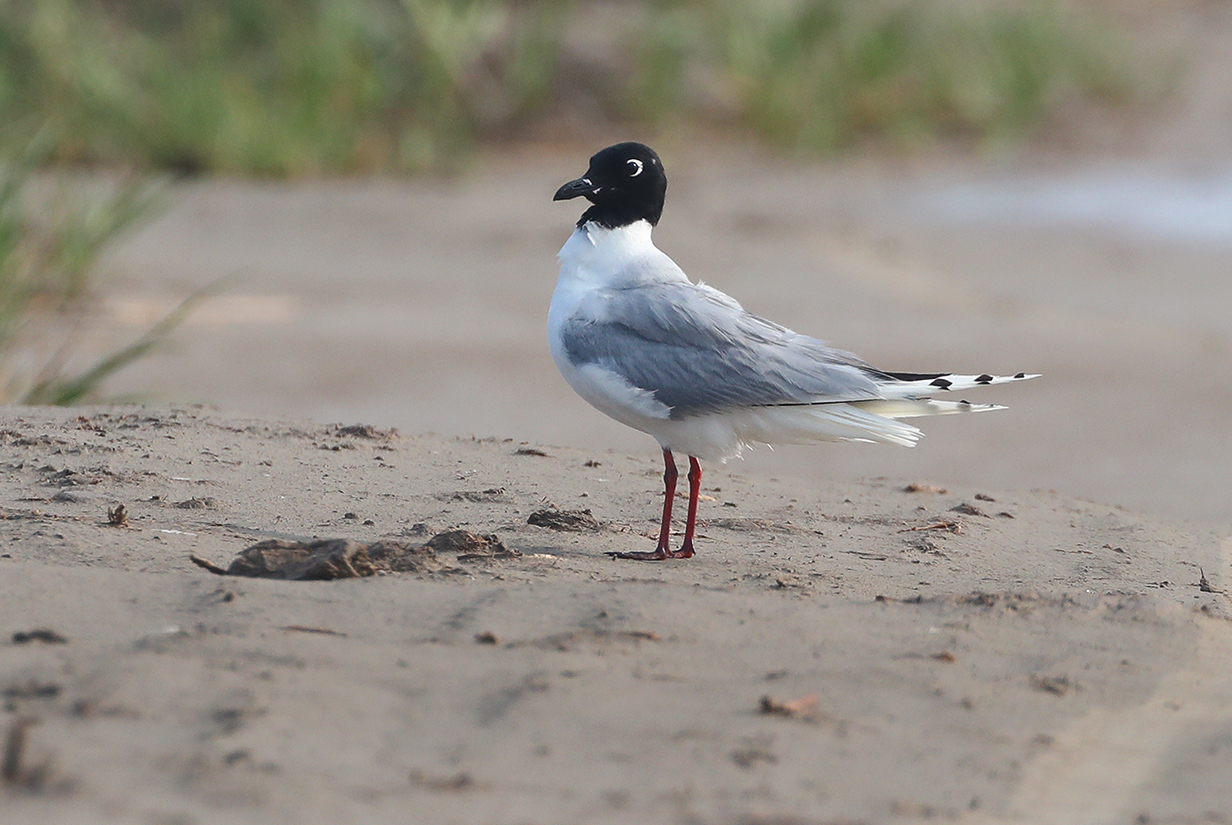
Saunder's gull (new on this trip, but this is not our life bird)
Fujian and Jiangxi Provinces: Coastal Mountains opposite Taiwan Strait
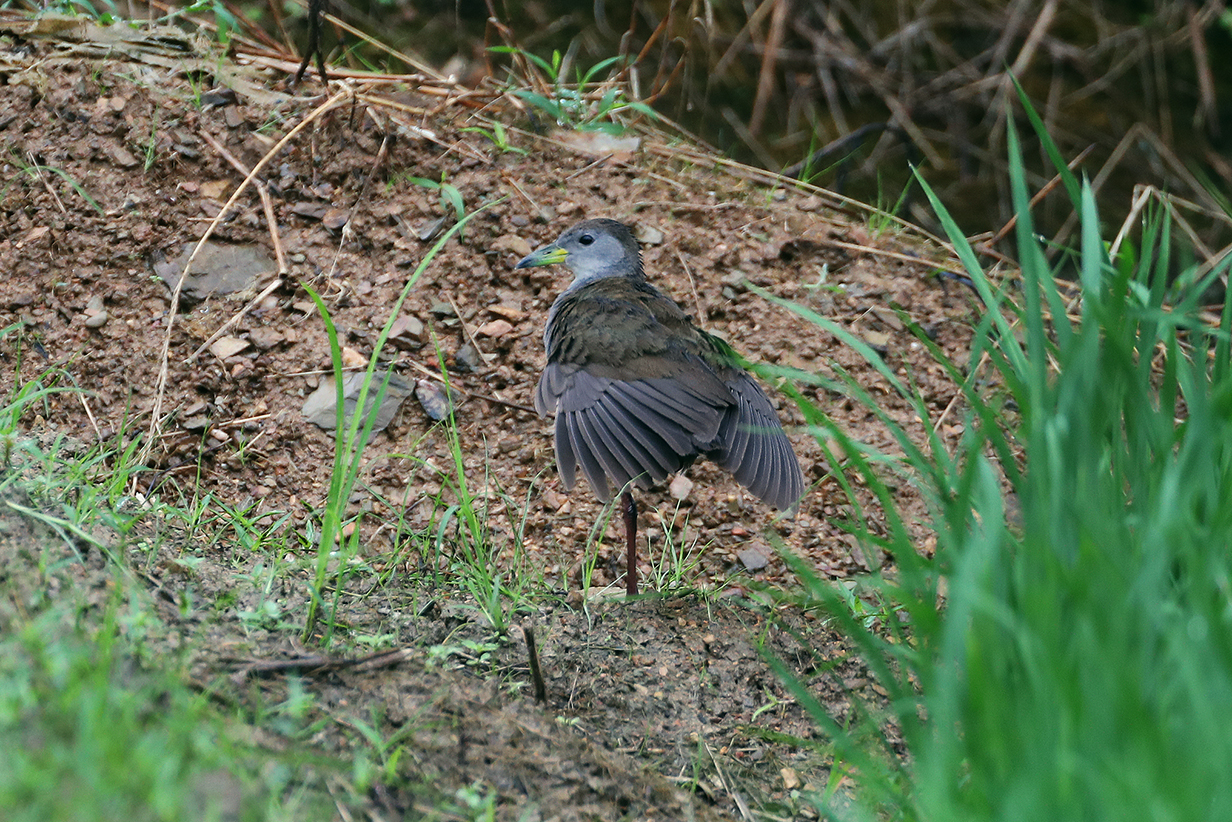
Brown crake drying its wings during a short break in the rain

Brown crakes (proclaiming territory, I would guess)
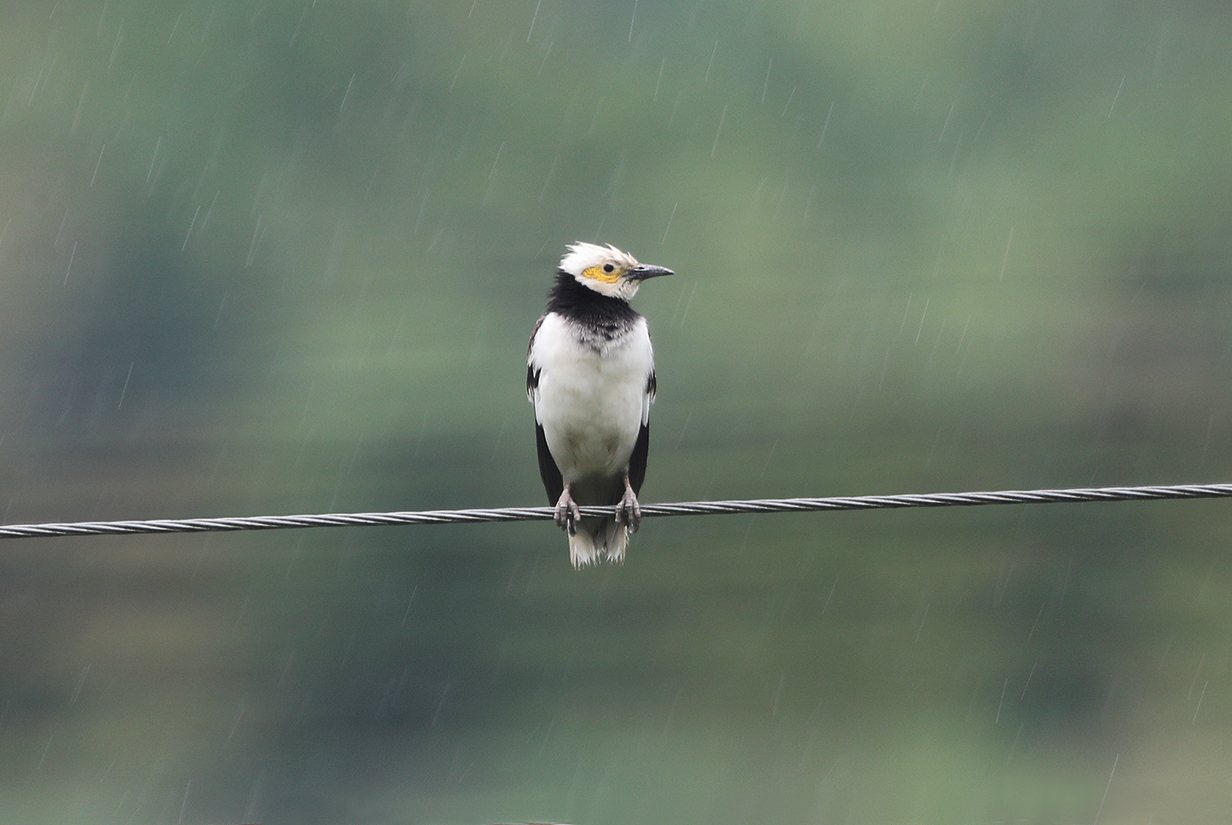
Black-collared starling (new on this trip, but this is not our life bird)
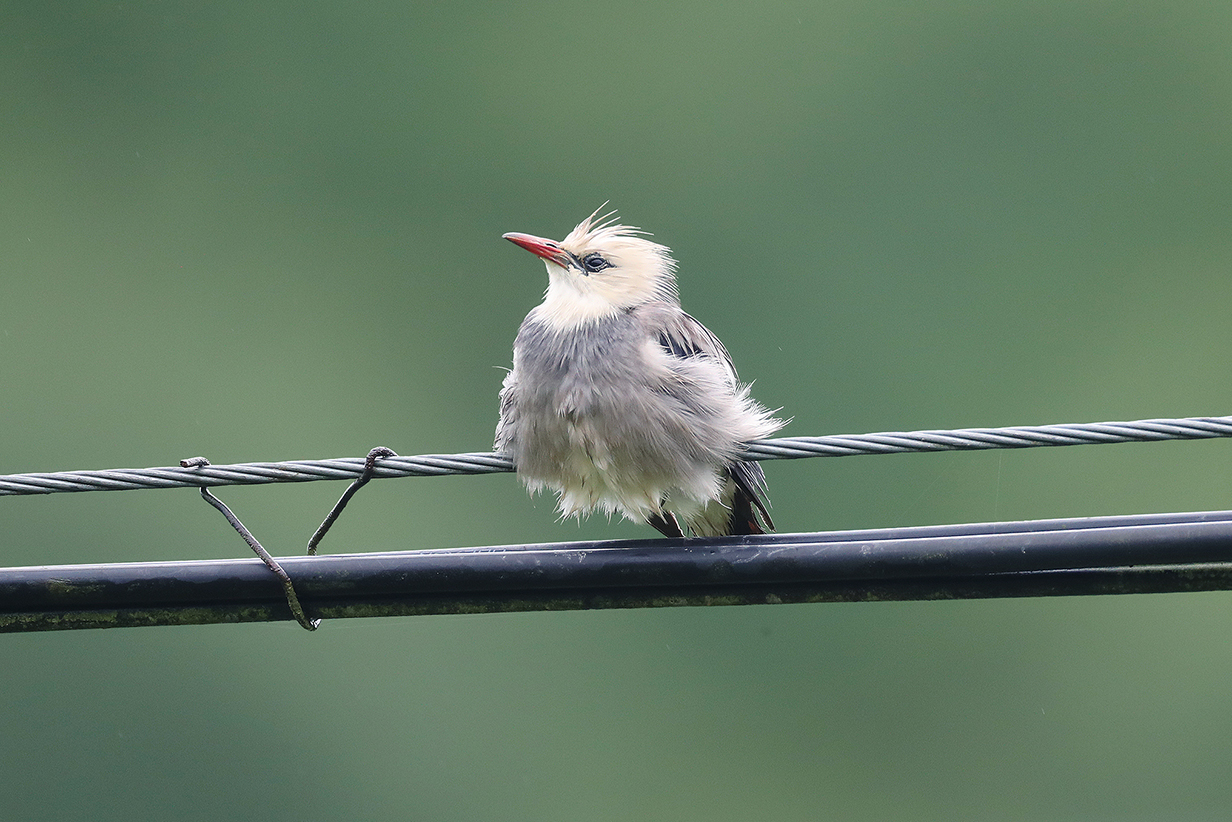
Red-billed starling (male, "bad hair day" in the rain)
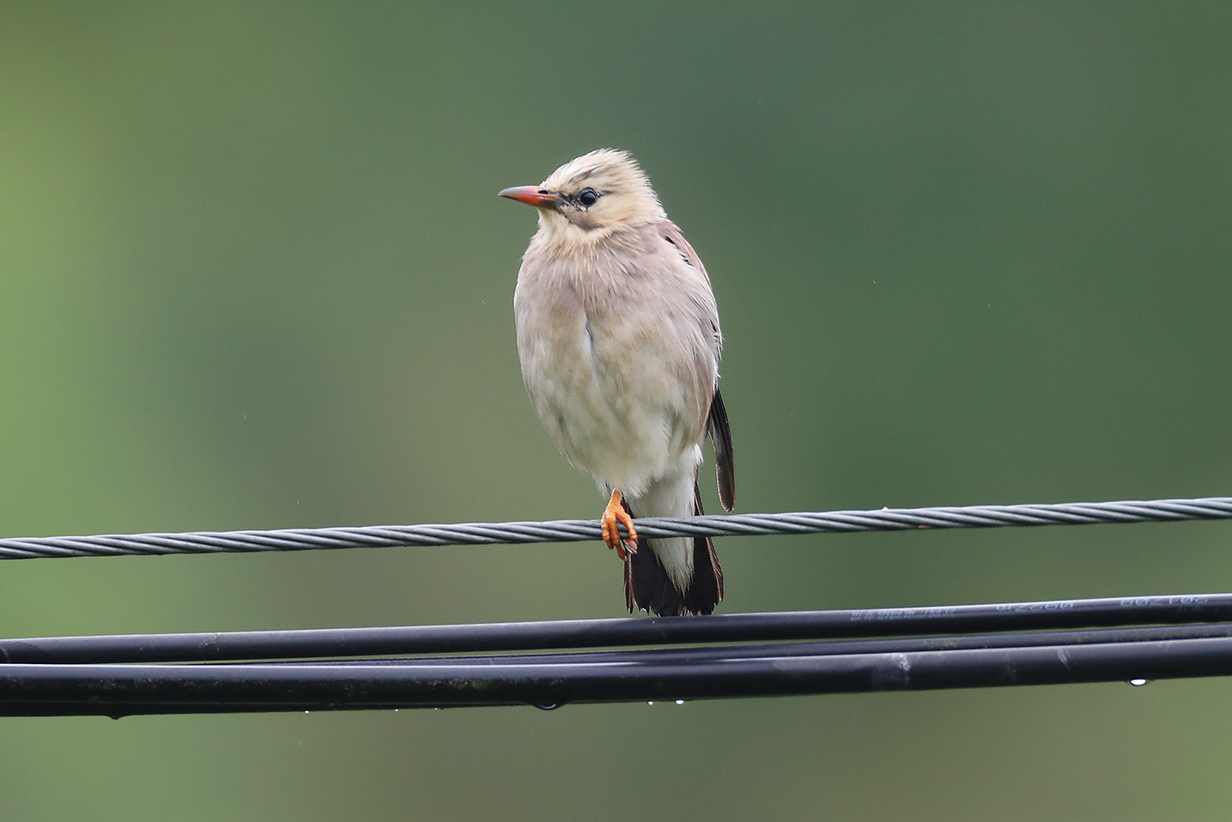
Red-billed starling (female in the rain)
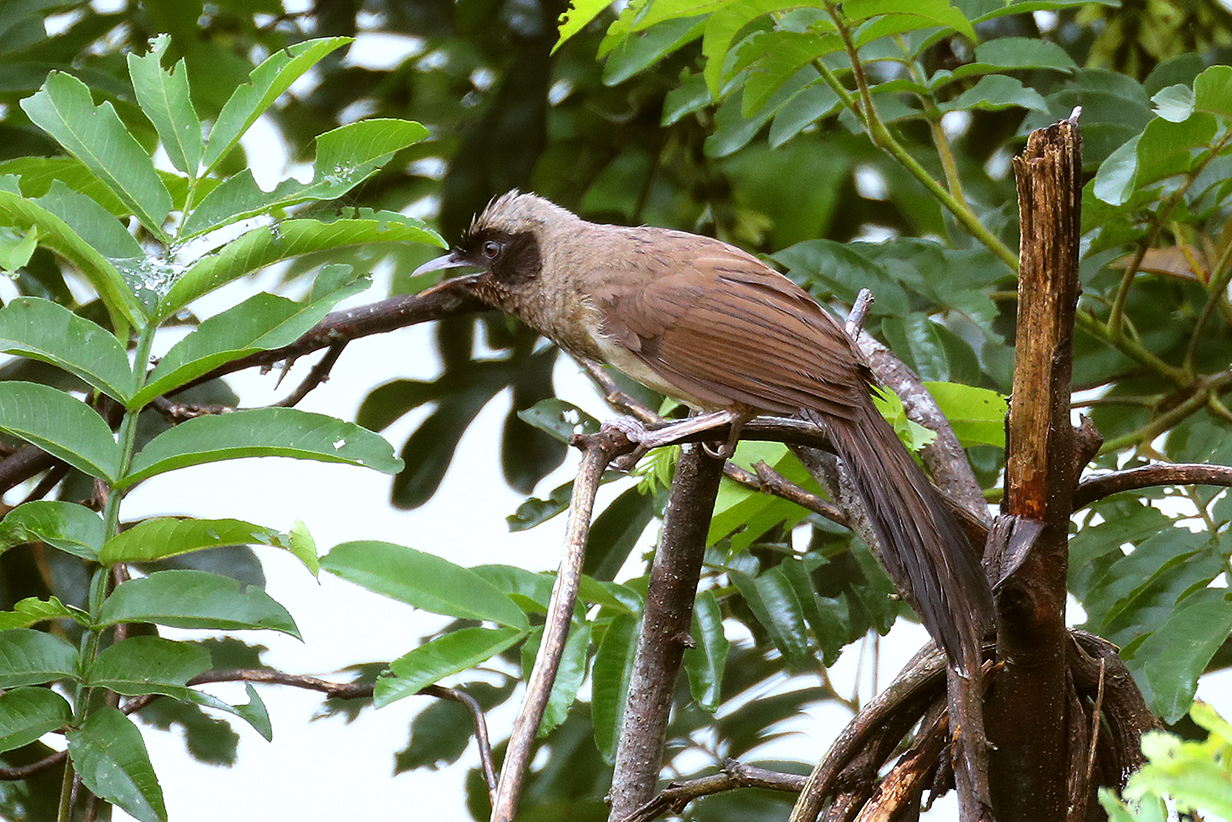
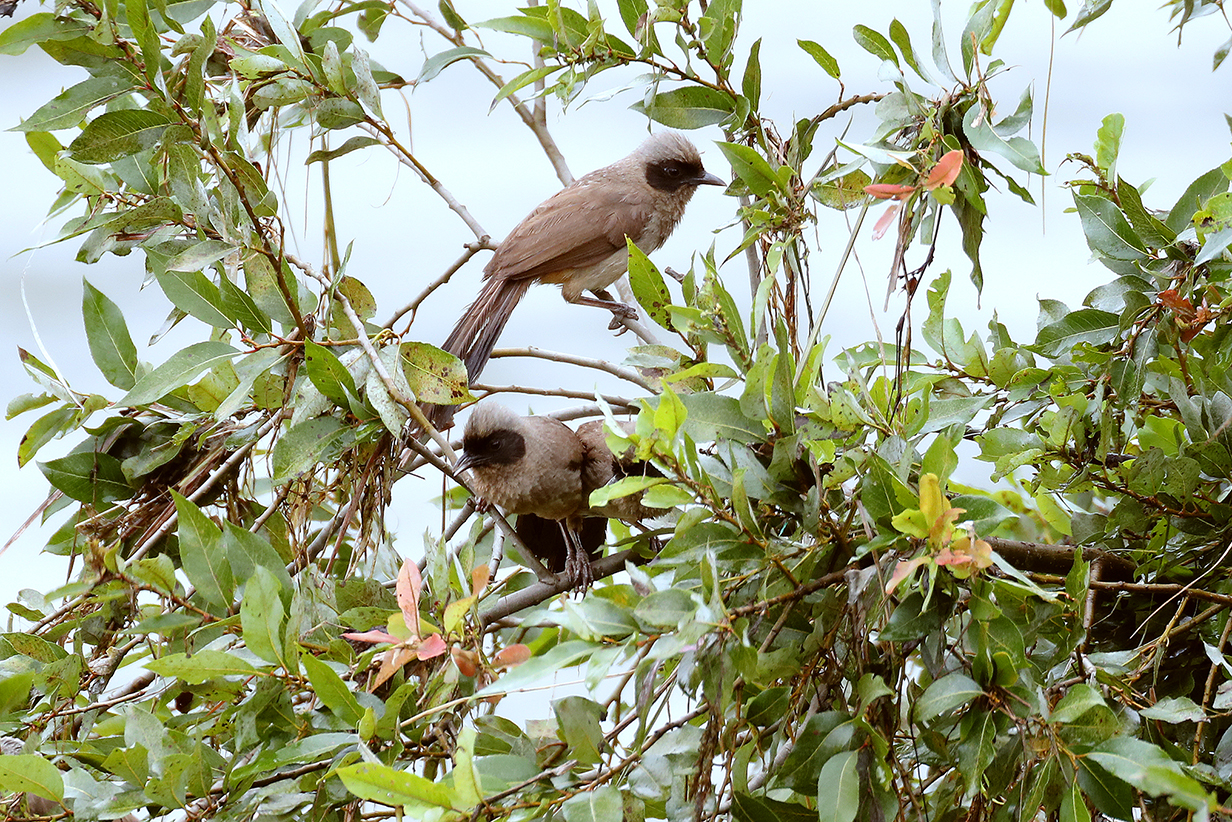

Masked laughingthrush (These are in a flock of John's life birds. Mary got her life bird later in the trip. Like many laughingthrushes, these birds like to work in closely-knit gangs.)
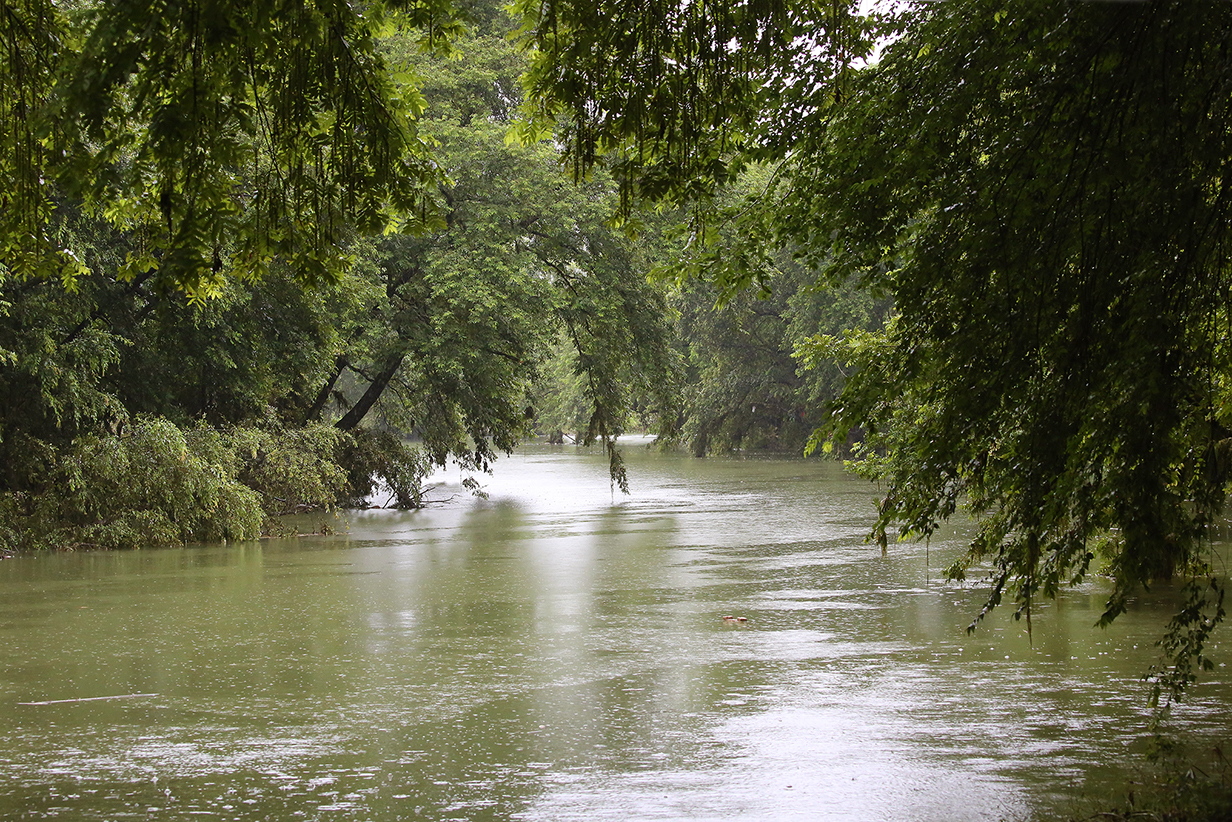
River in Wuyuan: The very rare Blue-crowned laughingthrush nests on the island at left in this picture. We heard a few of them there but did not see them. Local people are so (over)protective of the birds that they did not allow us onto the island from the "mainland" at right, not even with one of China's premier, conservation-active bird guides. We looked elsewhere - post-breeding, the birds had mostly dispersed - but we did not get this bird.

Chinese hwamei (This is John's life bird; Mary got hers the same day. Hwamei has been a "nemesis bird" for us for many years. It is well established on Kauai, but we never managed to see it there. We almost got it several times in Yunnan. This trip, we finally saw it often and well.)
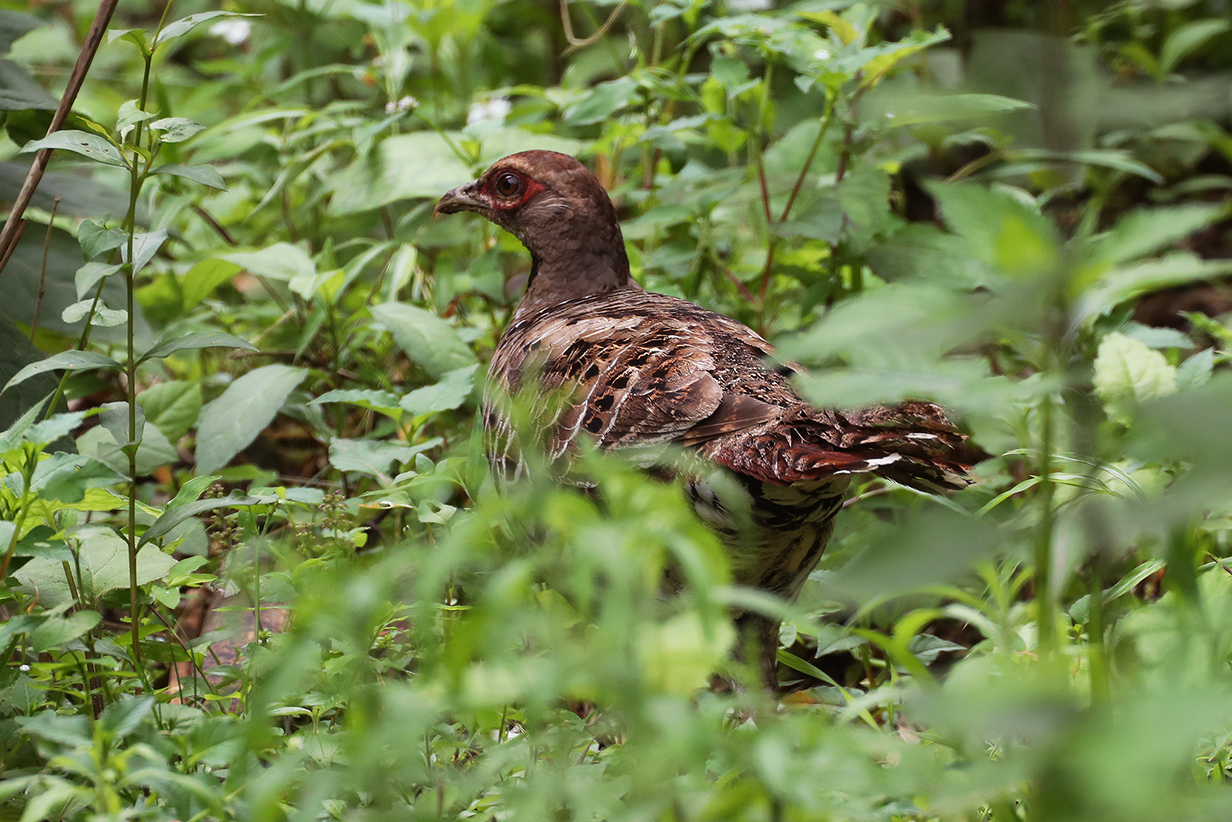

Elliot's pheasant (This female - plus one chick - is our life bird. We never saw a male. In general, we had good luck with Cabot's tragopan but bad luck with pheasants. Besides this bird, John saw one male and one female Silver pheasant ... but only for a few seconds, not long enough for Mary to get Silver pheasant.)

Brown dipper

Cabot's tragopan (This is our life bird, photograped through the window of our car.)
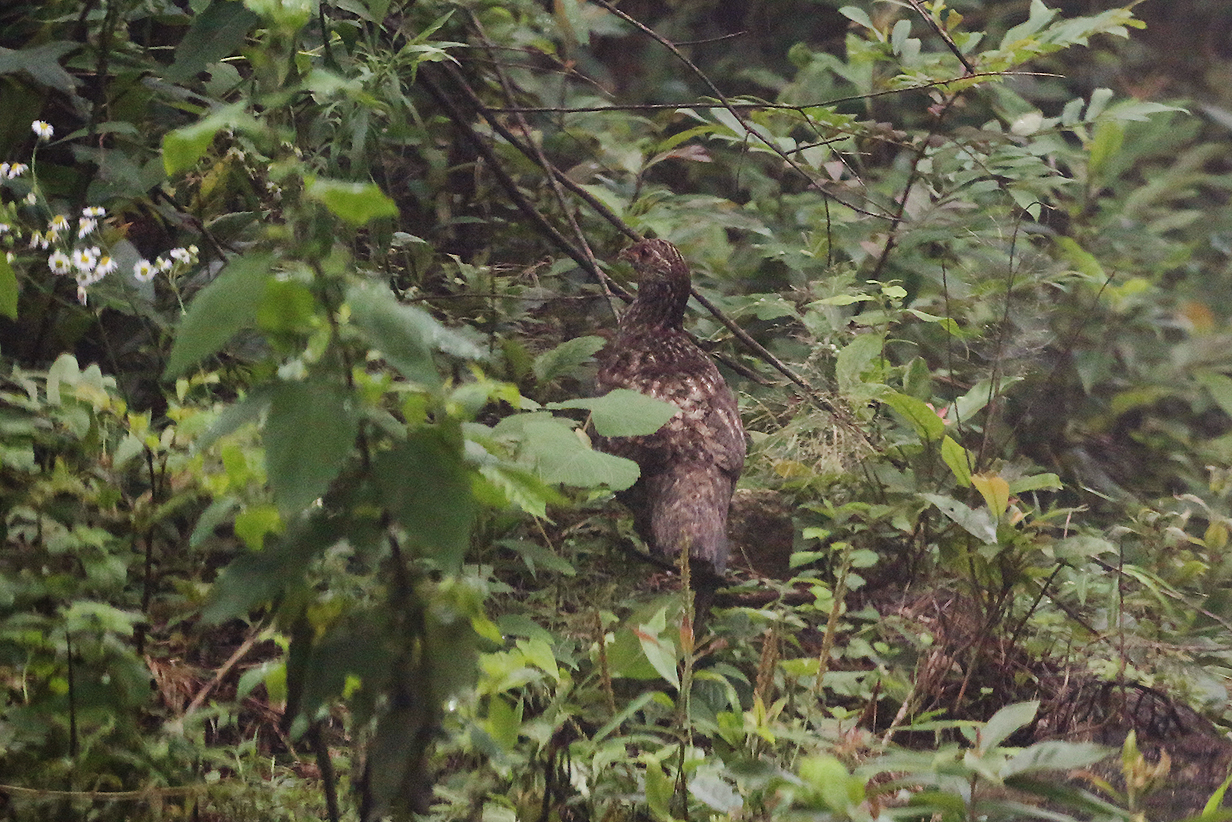
Cabot's tragpan (female in fog)

Cabot's tragopan chick almost fully grown
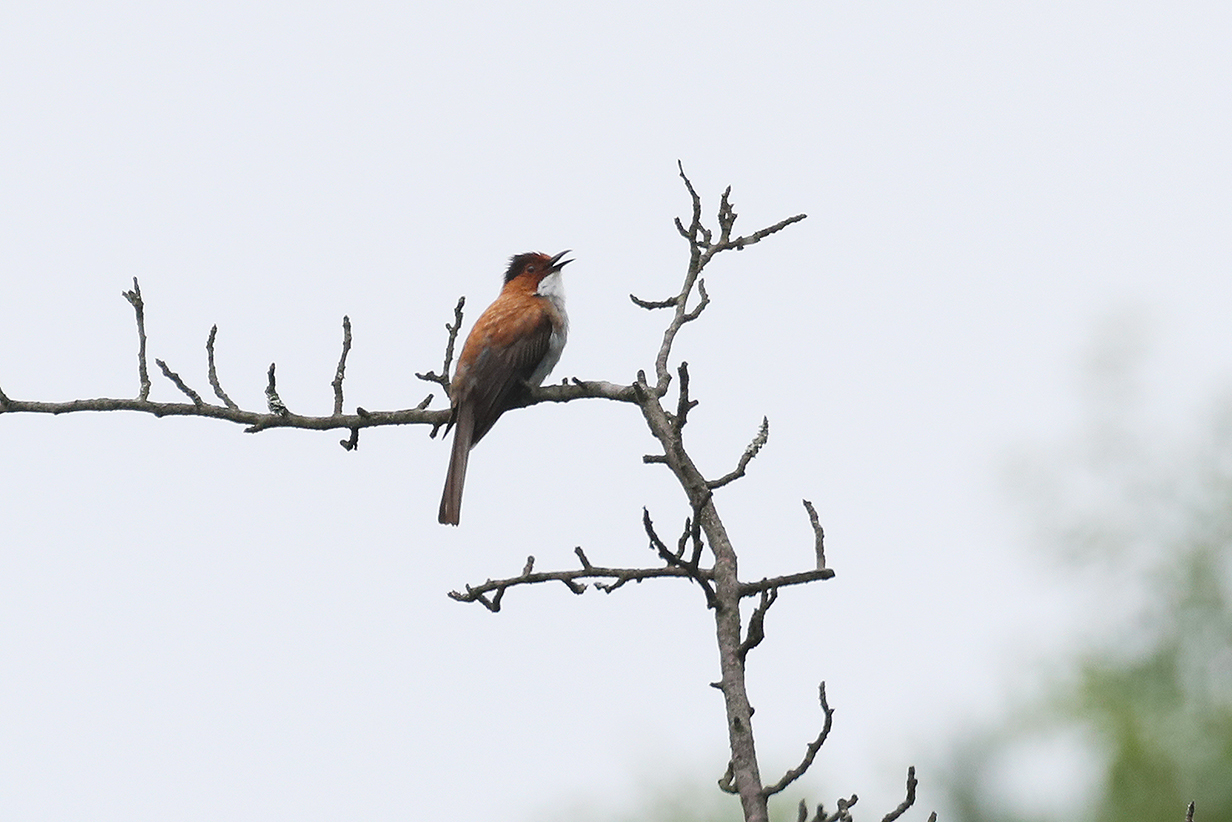
Chestnut bulbul (This is our life bird.)
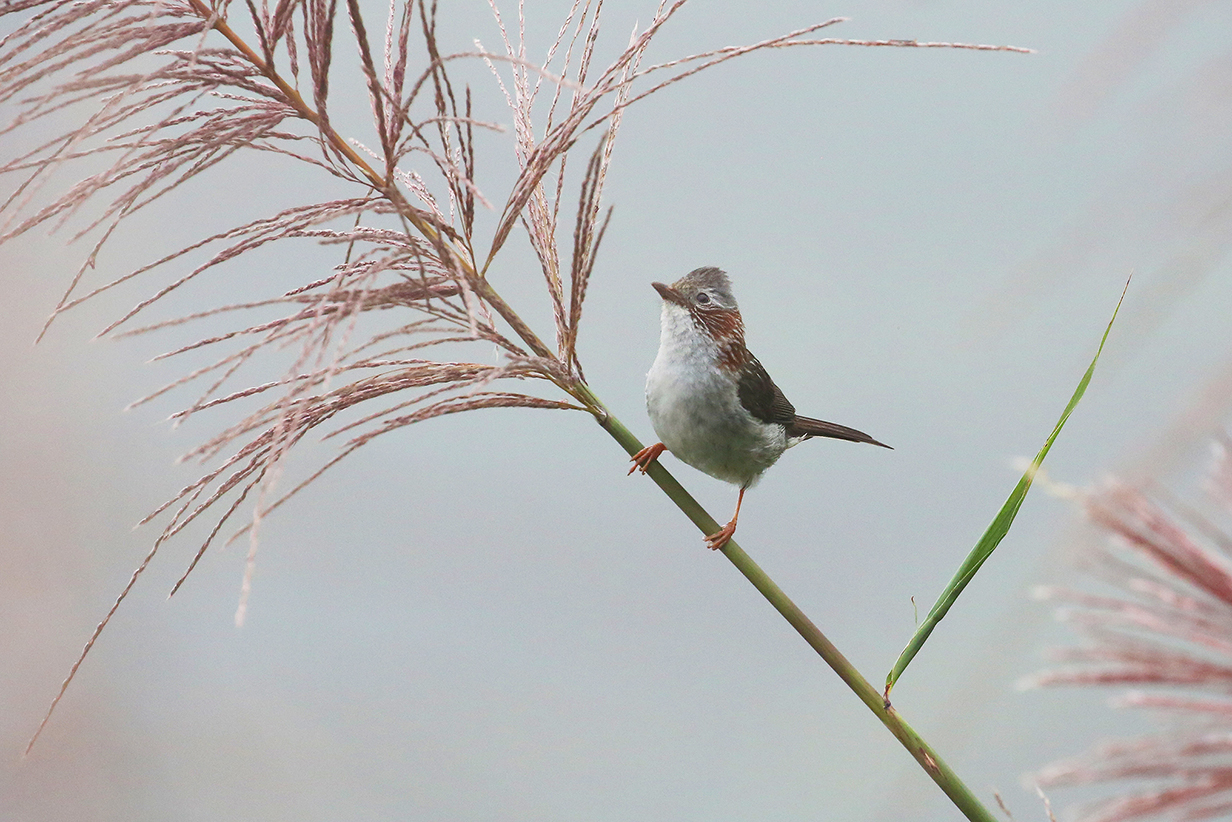
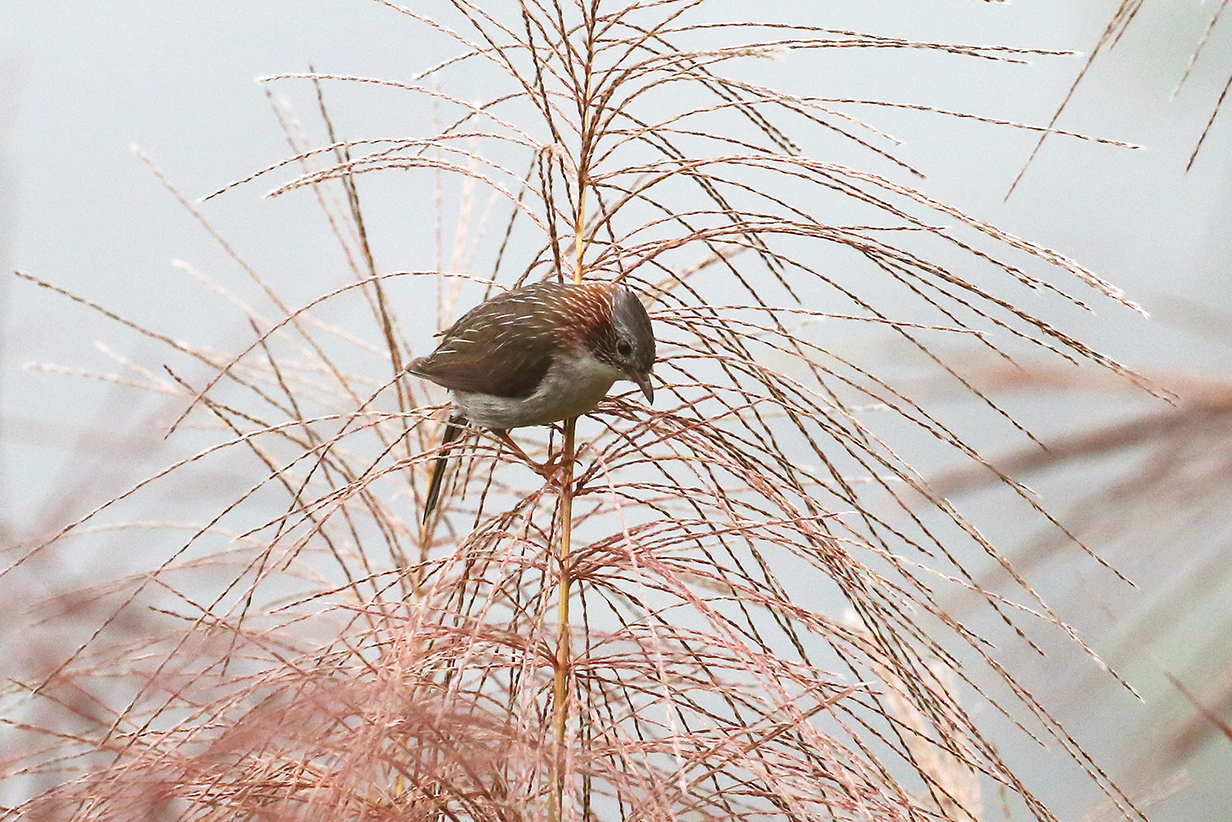

Indochinese yuhina (one of a flock of our life birds)
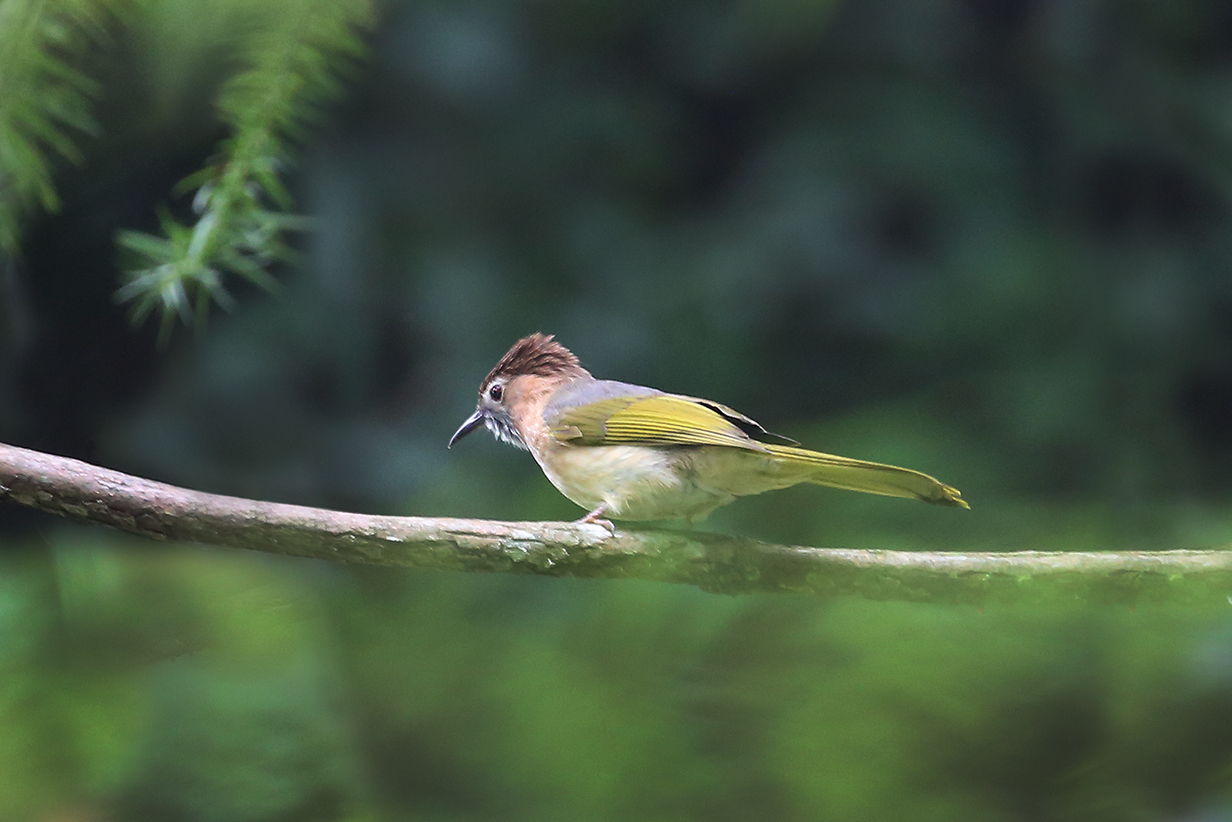
Mountain bulbul (new for Mary on this trip)

Chinese bamboo-partridge (We saw them well three times in widely different places.)
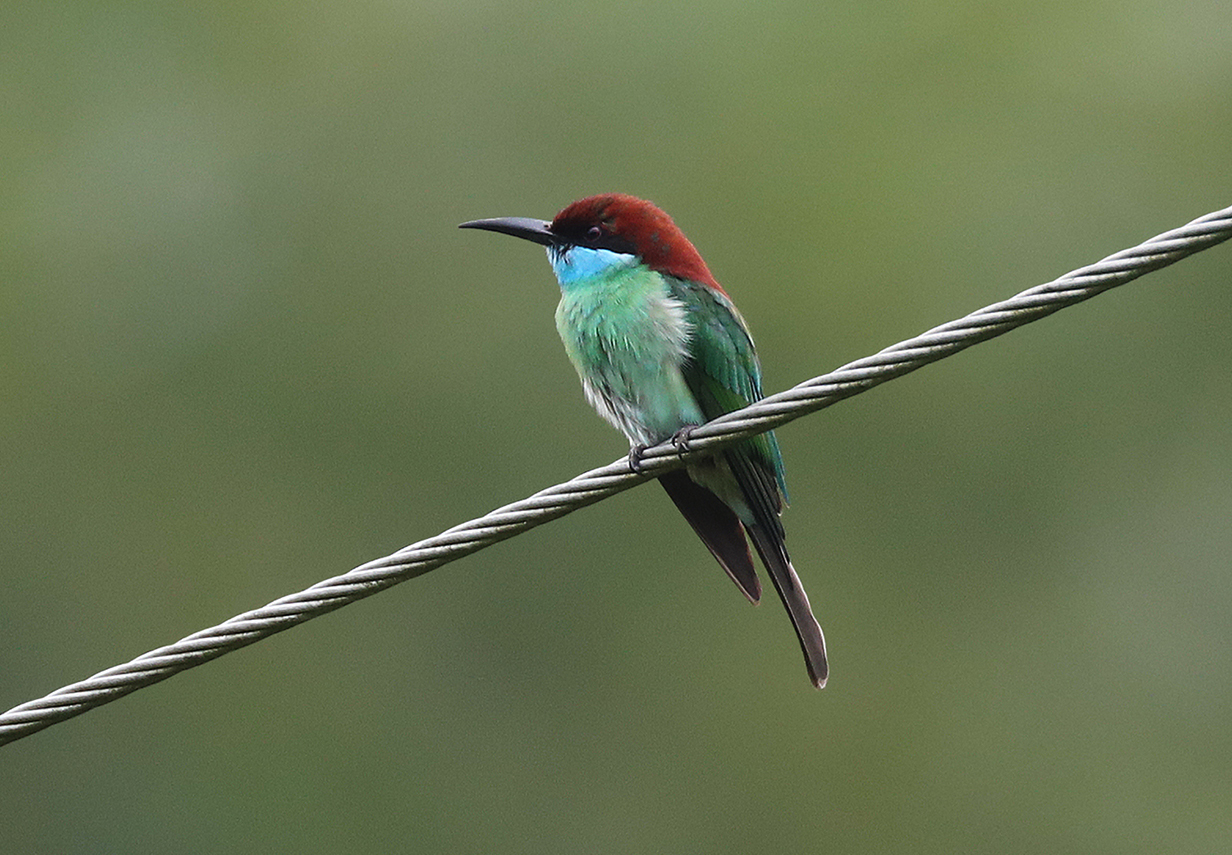
Blue-throated bee-eater (This is our life bird.)
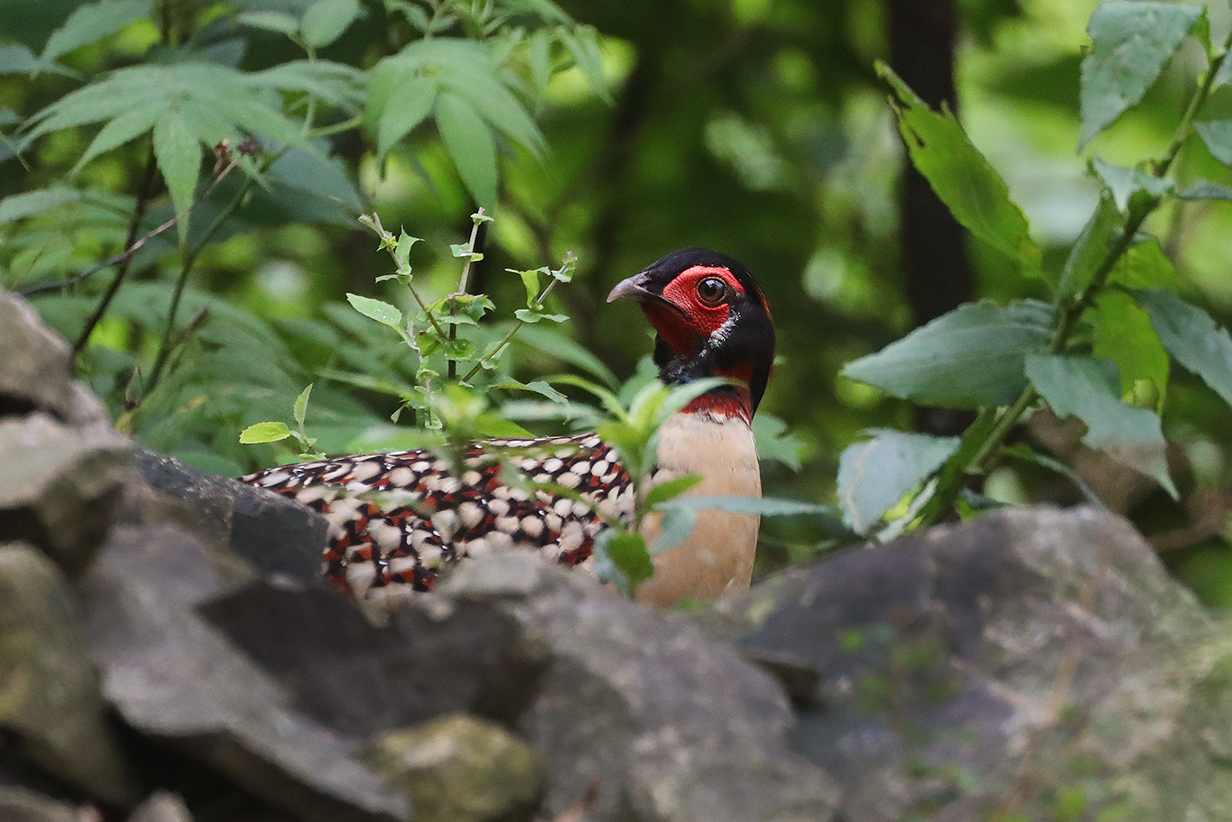
Cabot's tragopan - appearance of the first of a pair of males. Day 6 = 2019 July 10th had, until then, been a very slow day. Suddenly the day was transformed!
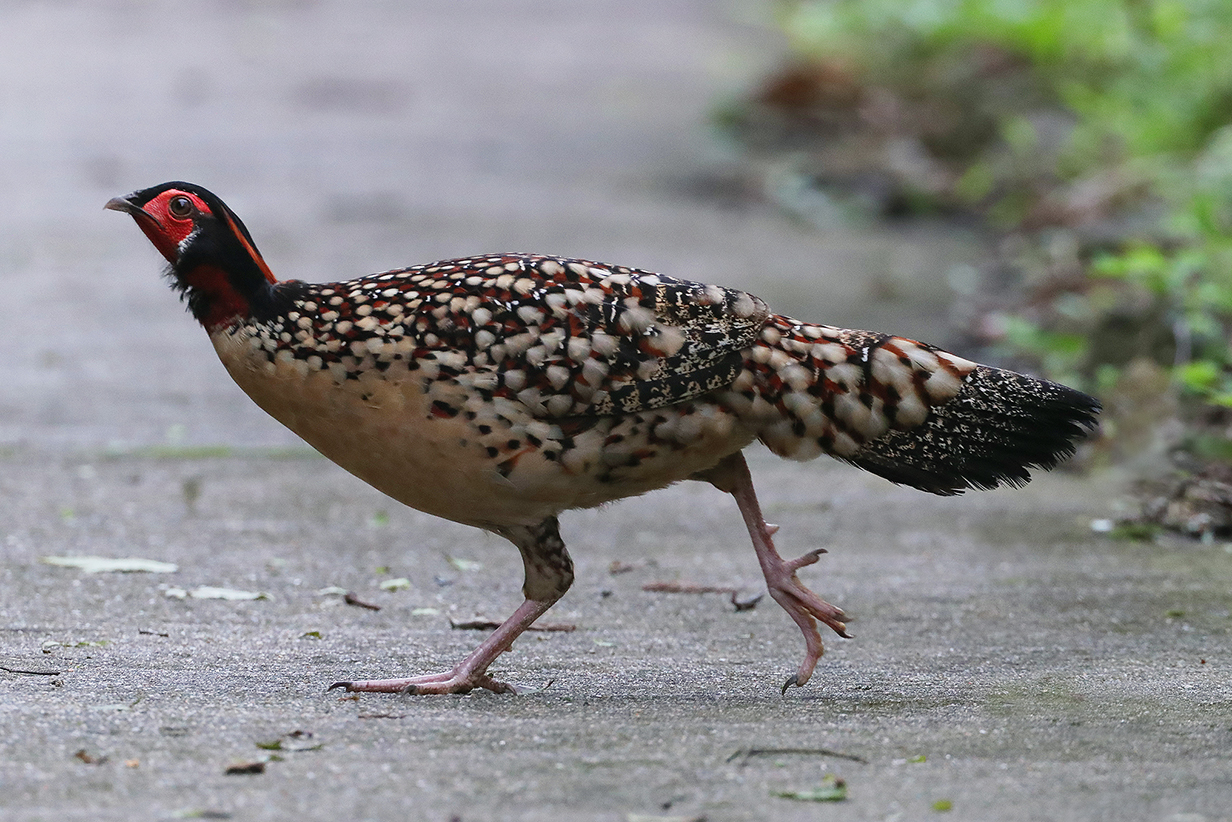


Cabot's tragopan: We had incredibly good luck in seeing 2 males very well and 3 males, 3 females, and 3 chicks altogether.

View at the summit of the road from Fujian to Jiangxi province (photo courtesy Mr. Zhang Lin). John got a brief look at Silver pheasant near here. From here, we drove out to Lichuan and Ying Tan to catch the fast train back to Shanghai. On the way out, we saw:

Chinese hwamei one more time, on the drive out of the mountains. This bird is wet from bathing in a stream.
Our bird pictures from around the world follow standard ecozones approximately but not exactly:
Birds from the USA and Canada: our house, Hornsby Bend and greater Austin, Texas, California, Hawaii, Canada,
Neotropic birds from Central America and the Caribbean: Honduras, Costa Rica, Panama, Trinidad and Tobago
Neotropic birds from South America: Ecuador, Ecuador 2017, Brazil.
Western palearctic birds: Europe: Germany, Finland, Norway, Europe: United Kingdom, Europe: Spain, the Canary Islands, Europe: Lesbos, Greece, Israel
Eastern palearctic birds: China
Birds from Africa: The Gambia, South Africa
Indo-Malayan birds from India: North-west (Delhi, Uttar Pradesh, Uttarakhand) India: North-east (Assam, Arunachal Pradesh, Meghalaya) India: Central (Maharashtra, Madhya Pradesh)
Birds from Australia, New Zealand.
For our 2014 December trip to India, see this travelog.
For our 2016 May-June trip to India, see this travelog.
For our 2017 April trip to High Island, Texas, see this web site.
For our 2018 March trip to India, see this travelog.
For our 2018 May trip to China, see this travelog.
For our 2018 November trip to China, see this travelog.
For our 2019 April trip to High Island, Texas, see this web site.
For our 2019 July trip to China, see this travelog.
For our 2021 April trip to High Island, Texas, see this web site.
For our 2021 December trip to Ecuador, see this web site.
For our 2022 January trip to Peru, see this web site.
For our 2022 July-August trip to Australia and Papua New Guinea, see this web site.
For our 2022 September trip to Bolivia, see this web site.
For our 2022 November-December pre-trip to Argentina (before our Antarctic cruise), see this web site.
For our 2022 November-December cruise to Antarctica, see this web site.
For our 2023 January birding in Chile, see this web site.
For our 2023 January-March cruise from Chile to Antarctica and around South America to Miami, FL, see this web site.
For our 2023 March-April birding in south Florida (after the Seabourn cruise), see this web site.
For our 2023 November-December birding to Sri Lanka, the Andaman Islands, and South India, see this web site.
For John's 2024 February-March birding in Colombia, see this web site.
For our 2024 May-June cruise from Iceland to Jan Mayen Island to and around the Svalbard Archipelago, see this web site.
For our 2024 June 25-30 stay in Paris, see this web site.
For our 2025 April 21 - May 3 trip to High Island, Texas, see this web site.